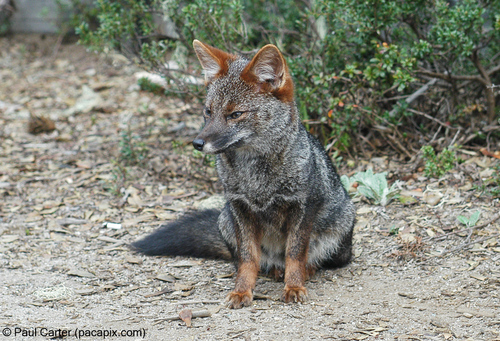
Darwin's fox
Darwin's fox, with its dark fur and bushy tail, thrives in Chile's rainforests. This elusive canid is a vital seed disperser, balancing its omnivorous diet with fruits and small prey, highlighting its ecological importance and adaptability in dense woodland habitats.
1.814 - 3.946 kg
Weight
Length: 53 cm
Size
Grey, Red, Black
Color
1 year
Age of Sexual Maturity
2 months
Age of Weaning
45 mph
Top Speed
Endangered
Conservation Status
Decreasing
Population Trend
Characteristics
The Darwin's fox (Lycalopex fulvipes) is a small, elusive canid native to Chile, primarily inhabiting temperate rainforests and dense woodlands. It has a distinctive dark coat and bushy tail, and is known for its omnivorous diet, consuming fruits, small mammals, and invertebrates. This species plays a crucial role in seed dispersal within its ecosystem.
Distribution Range of the Darwin's fox
Lycalopex fulvipes, commonly known as the Darwin's fox, is native to Chile. It is primarily found on Chiloé Island and in the Nahuelbuta Range on the mainland.
Darwin's fox's Habitat
Environmental Conditions
The Darwin's fox inhabits temperate rainforests characterized by high humidity and dense forest canopy. These areas experience significant rainfall, with cool temperatures typical of the temperate climate zone.
Ecological Niche
As an omnivorous species, the Darwin's fox occupies a niche as both a predator of small animals and an opportunistic feeder on fruits and other plant materials. Its dense forest habitat provides ample cover and a variety of food sources, allowing it to thrive in a relatively isolated ecosystem.
Copyright @ Nature Style Limited. All Rights Reserved.
 English
English